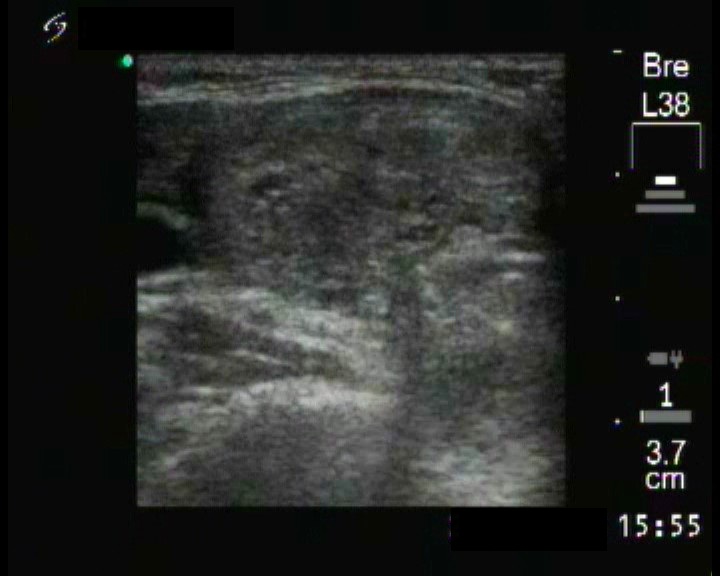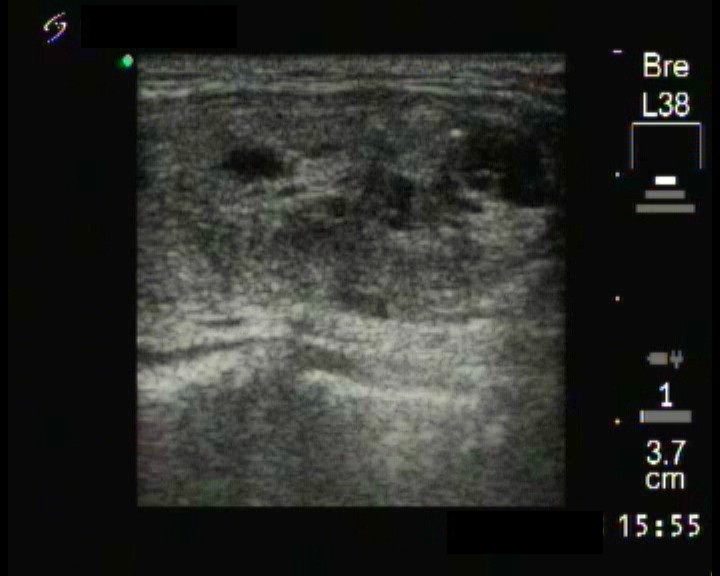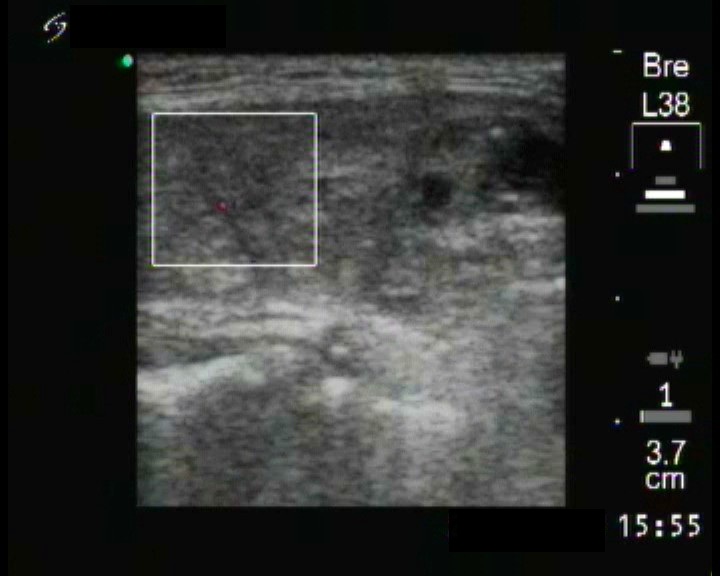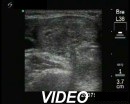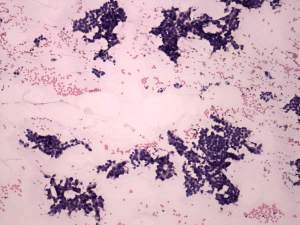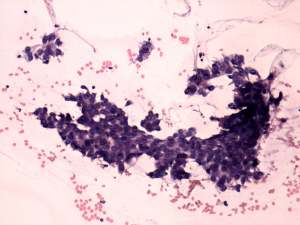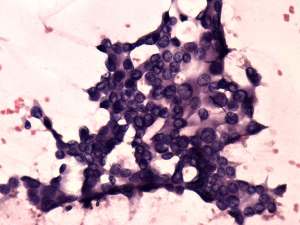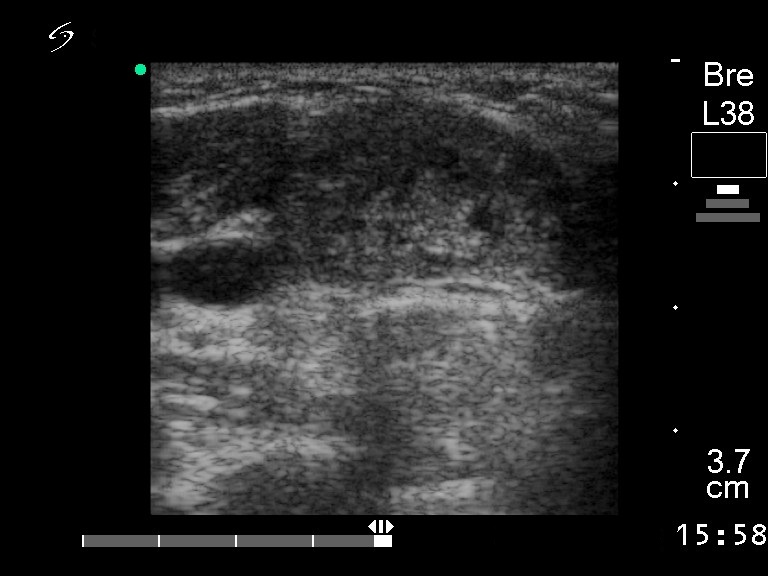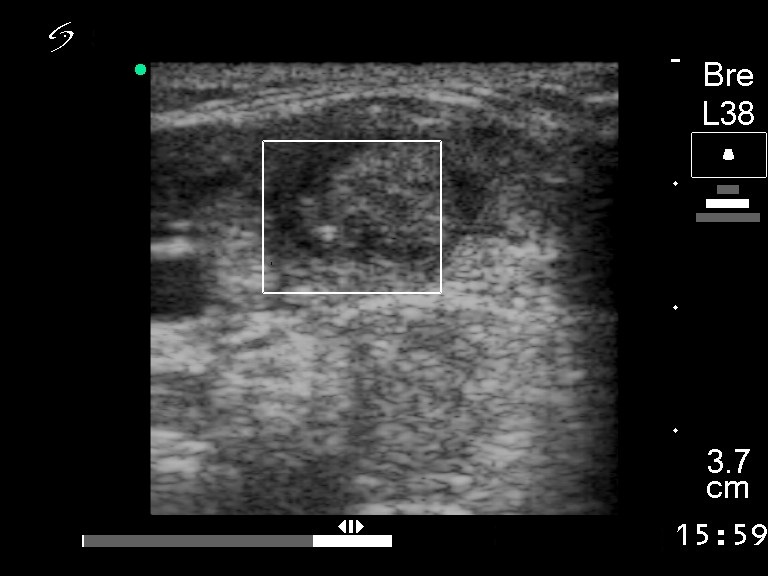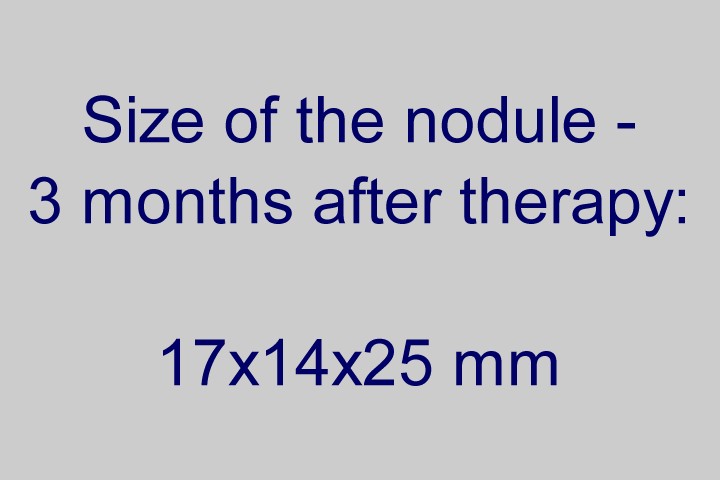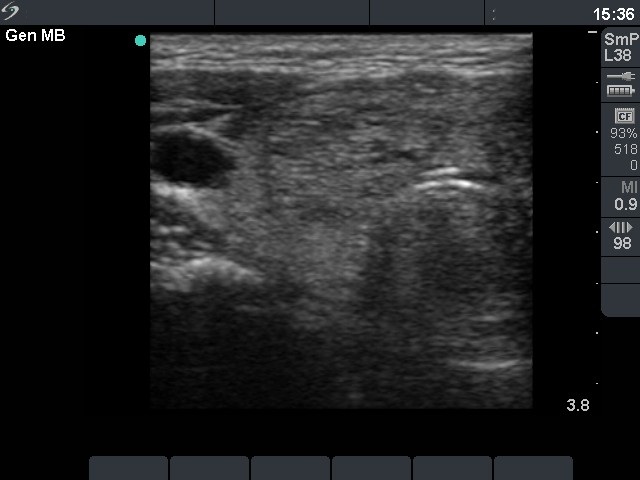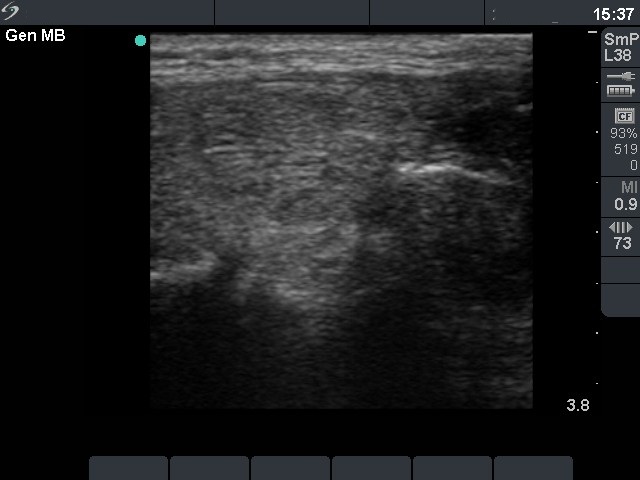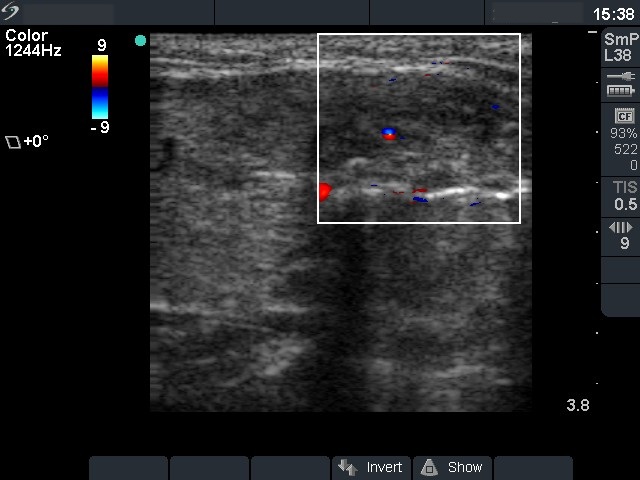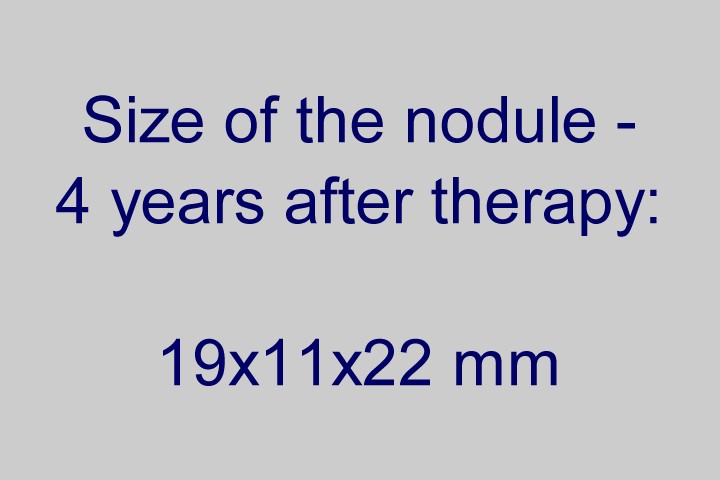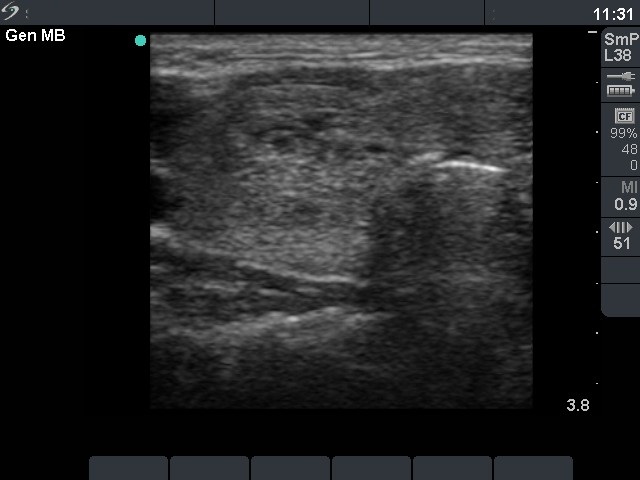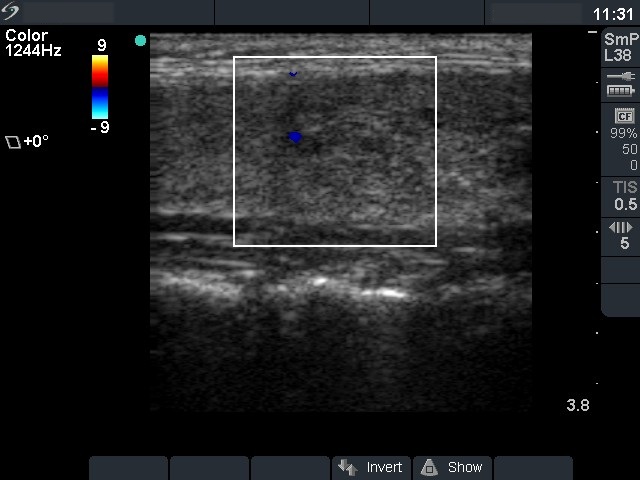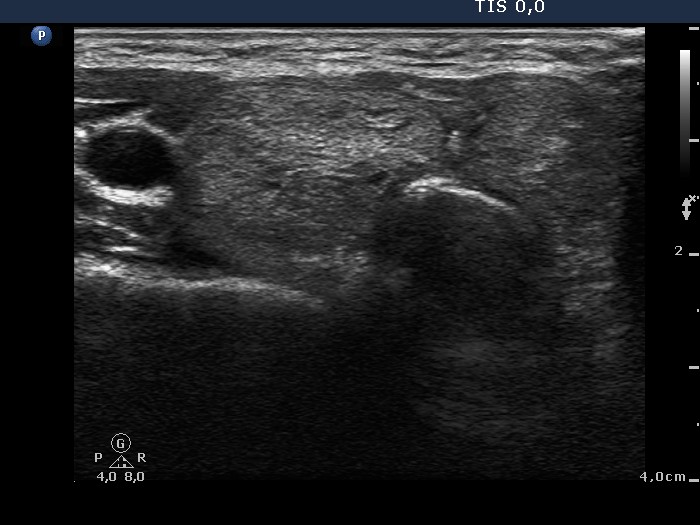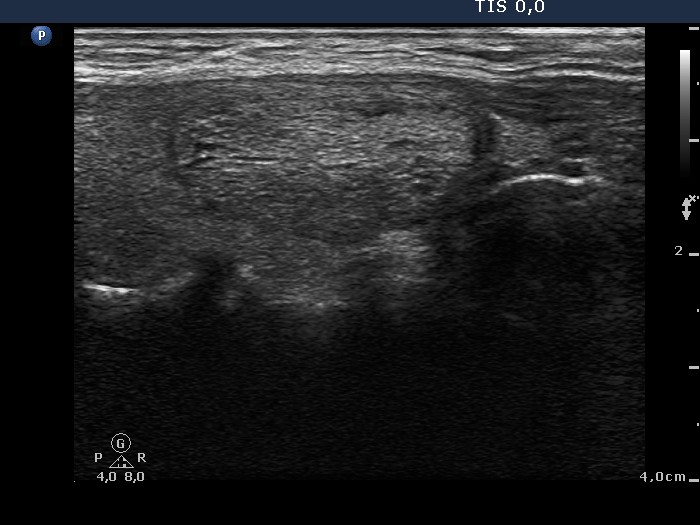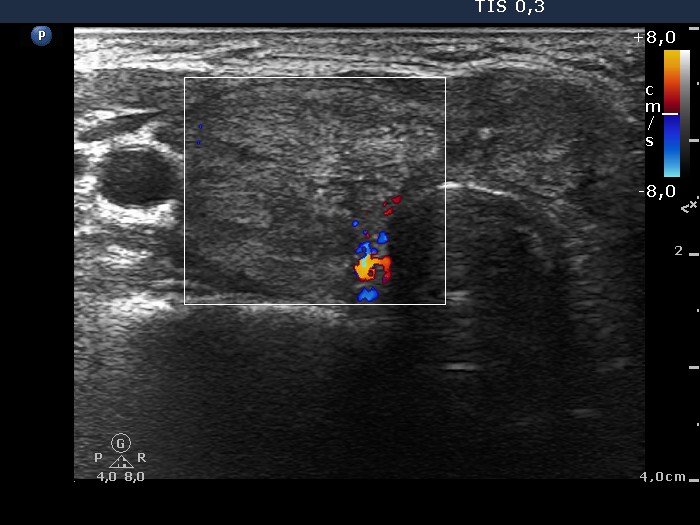Ethanol sclerotherapy: other examples - Case 1: papillary carcinoma |
|
Clinical presentation: a 72-year-old woman was sent for sclerotherapy. She discovered a nodule 3 months before which caused difficulties in swallowing. Aspiration cytology performed in another hospital resulted in non-diagnostic result. The patient had multiple severe diseases including cardiac failure and renal insufficiency. It is worth mentioning that one year earlier after a gallbladder operation severe complications occurred and the patient had to be treated for three months in an intensive care unit. Considering the risk of anesthesia the endocrinologist offered ethanol sclerotherapy instead of surgery.
Palpation: a firm nodule in the right lobe and the isthmus.
Functional state: euthyroidism with TSH 0.29 mIU/L, FT4 17.8 pM/L.
Ultrasonography: the thyroids were echonormal. There was a moderately hypoechogenic, inhomogeneous nodule in the isthmic part of the right lobe. The vascularization was decreased.
Aspiration cytology: papillary cancer.
We consulted with the anesthetist of the gallbladder operation who stated that a general anesthesia would mean a serious risk. Thereafter we discussed the situation with the patient and decided to perform sclerotherapy. The volume of the nodule was 10.0 mL. Four sessions of alcohol was given with a total amount of 6.7 mL of ethanol. Although we planned to give 10 mL of ethanol, considering the significant shrinkage of the nodule after the last but one session we made the further sessions shorter.
Follow-up: the essence of follow-up i.e. change in size and in volume and echo pattern are given in the table and sonographic images. The difficulties in swallowing stopped after the third session and did not recur over the period of follow-up examinations. The patient remained euthyroid and had no complaints caused by her thyroid. Nevertheless the size of the nodule gradually increased during the four-year follow-up examination. She died three months after the last visit.
Autopsy: disclosed papillary carcinoma with metastases to the regional lymph nodes. There were no distant metastases. The cause of the death was cardiac failure caused by dilated cardiomyopathy and pulmonary embolism.
Comments:
-
The sclerotherapy of this patient was only temporarily successful. The nodule decreased in volume from 10.0 mL to 2.41 mL, before and four years after treatment, respectively. The six-year follow-up volume was 5.65 mL, i.e. more than 50% of the original. This is beyond the limit of success which is 50%.
-
Although the treatment of this patient was unsuccessful in a statistical manner, the sclerotherapy resulted in complete and lifelong lasting resolution of complaints and prevented the patient from worsening of life quality and from decreasing life expectancy caused by the papillary cancer.


